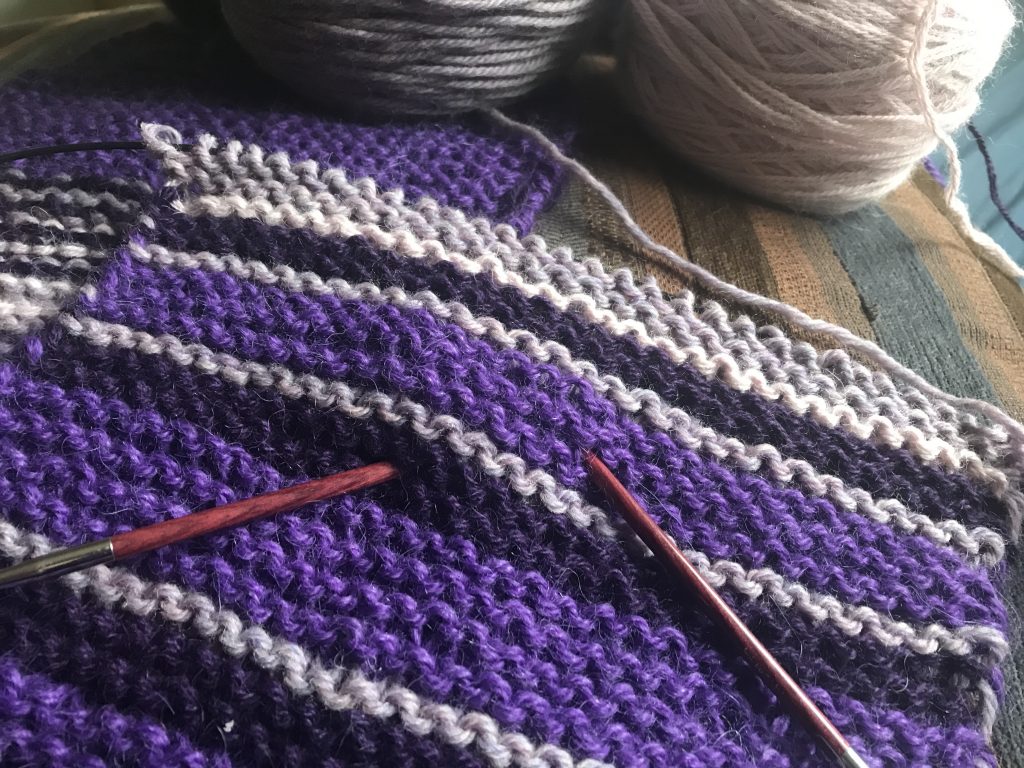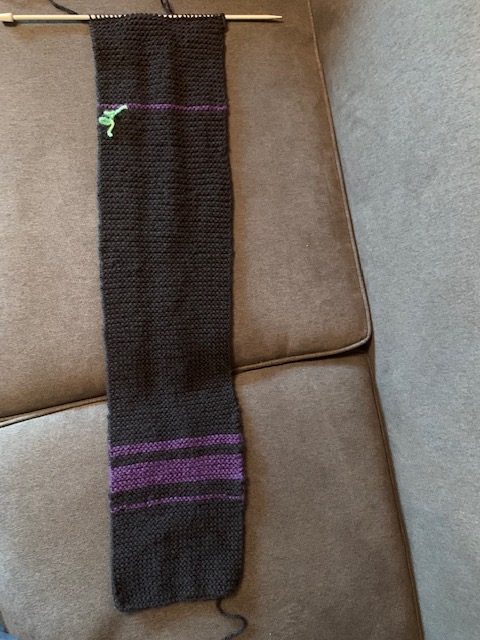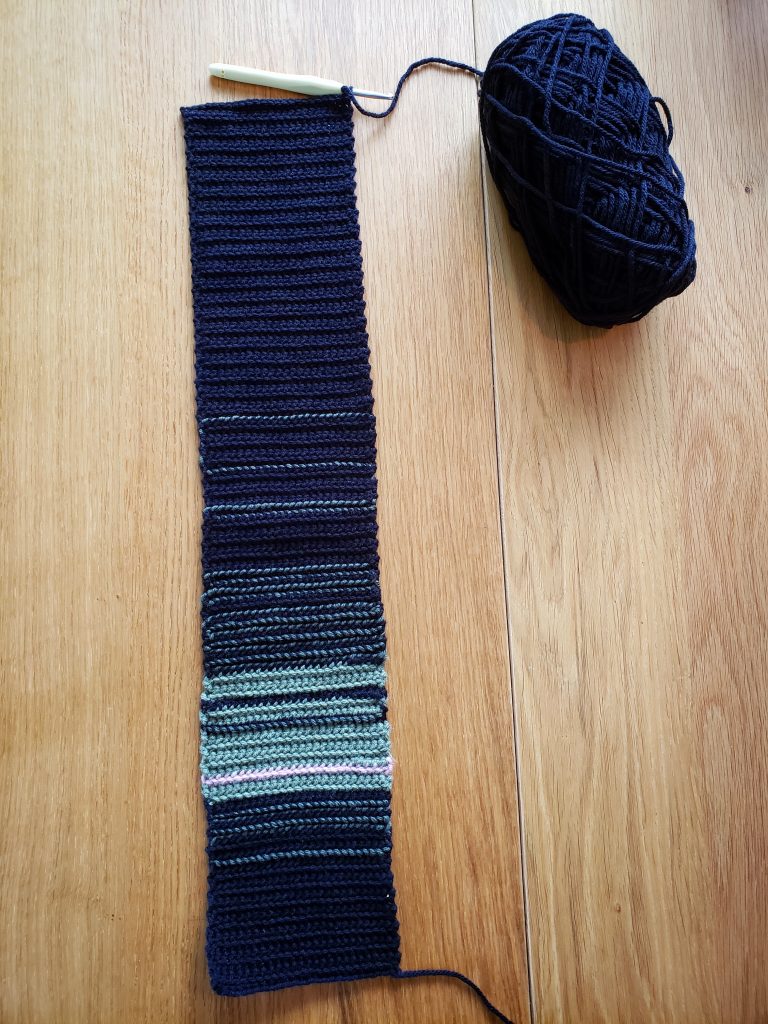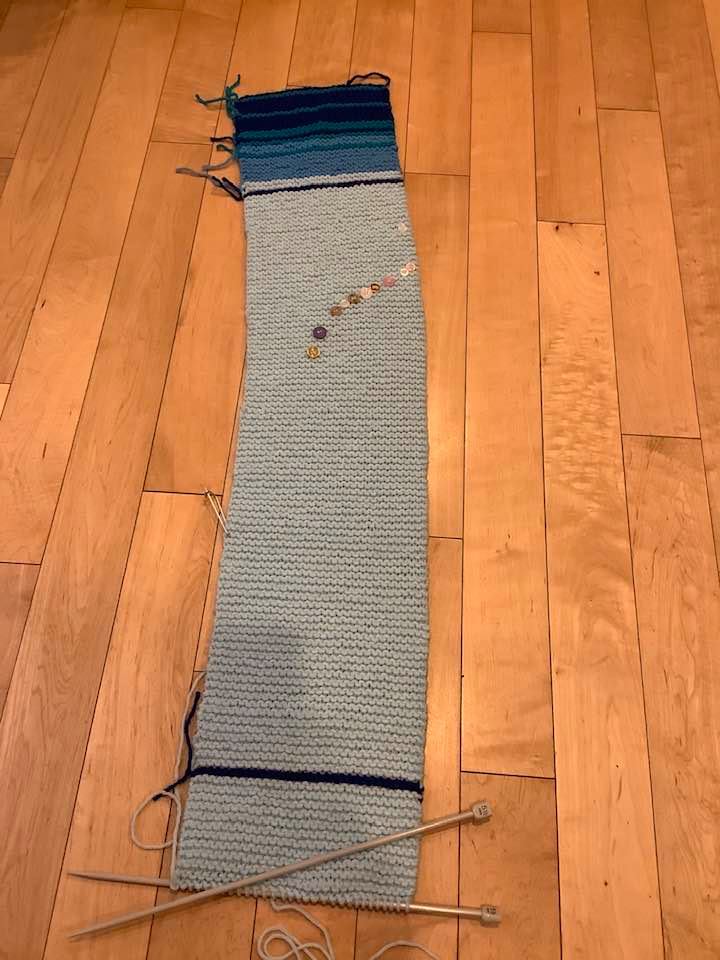
It has now been well over five months since a group of us University of Alberta Library staff began a data physicalization project to stitch Covid-19 data in Canada. It’s a project that we called “Stitching the Curve”. This is a little update on this data physicalization project’s progress.

To quickly recap the project, members of our team have all selected provinces to either knit or crochet. Our colleague and fellow knitter, Peter Binkley, created a code that produces a spreadsheet that is automatically updated with COVID-19 case numbers for each province, via Health Canada data. We are knitting a row each day (back and forth) in a specific colour that is determined by the number of cases that day. The plan is to join our swatches as a blanket that will eventually manifest the full Canadian experience of COVID-19. To read more about data physicalization, read this earlier post by my colleague Abbie Shenk.
As the pandemic has continued, and even as various aspects of society have reopened, the university has remained predominantly closed. The library has since opened curbside pick up so some of our colleagues are working shifts on campus again but most library staff are still working from home. We are busy each day answering chat questions, providing information consults, and many of us are prepping for a fall term that will historically different, with most courses being offered online.
The months have seen our swatches grow longer. Looking at my own swatch, there are days it feels unnaturally long. One time I was sure I knitted a month twice by accident — surely March wasn’t that long ago? Then, there are other days where the length of the swatch feels unfortunately accurate, especially when the separation from colleagues and that sweet hum of the library feels like a distant memory.
Now that our swatches are getting longer we are also able to see some real trends in case-numbers from province to province. Some provinces such as Ontario and Quebec have unfortunately had high case numbers, so those knitting these swatches have had predominately been stitching in the lightest colours for months. You will see in the images that Christine (Ontario) and Peter (Quebec) are using annotative marks on their swatches for days with extremely high numbers of cases. In other provinces like Manitoba, New Brunswick and the Northern Territories, the case numbers have been very low. As you can see in Connie’s (New Brunswick) photo, her swatch is almost entirely dark in colour. She sent me these thoughts:

“New Brunswick continues to experience very low rates of Covid-19 as you can see from my mostly black swatch (March 1 – June 27). I added a small ribbon on June 4, the day of the province’s first death from Covid-19. I felt that it was important to mark this day as it was such a sad milestone for the province, and also sad as the death was within a long term care facility which has been the tragedy of the Canadian Covid-19 story. As the days and weeks have now turned to months, I have thought a lot about when we will mark the end of our knitting. Will we pick an arbitrary date like one year since starting (March 1), or will there be an official declaration that the pandemic is over?
I am so grateful that I started with this project as it sparked a renewed interest in knitting and crocheting. The past three months have been very challenging and emotionally difficult.
I have spent my spare time crocheting as it was a welcome break from screens and have appreciated the quiet, meditative space it provided for me.”

The continuation of the pandemic has also raised the question among the group as to when we will end the project and what we will do with the blanket once it is finished. Thus far we plan to continue stitching, however, eventually, we will have to call a cut off date. One possibility could be the end of February of 2021, thus making each swatch a year long. We have already started to consider what we might do with the final product of our work. We learned in late June that the Royal Alberta Museum is looking for pandemic related artifacts from Albertans. I reached out to their curators and heard that they would be interested in our blanket, when complete. I think it has been a pretty unanimous decision that we want the final work to go somewhere where it can be preserved and enjoyed by future generations, and the Royal Alberta Museum would be the ideal way for that to happen.
Because we know the project is likely to be preserved, one thing we have been trying to do more consciously is to journal and document our progress. I recently put together a video journal about the project which I am happy to share with you here as a conclusion. My small wish is that the next time I do an update on the project, we might all be working on campus again, stitching our swatches together. Here’s hoping!

